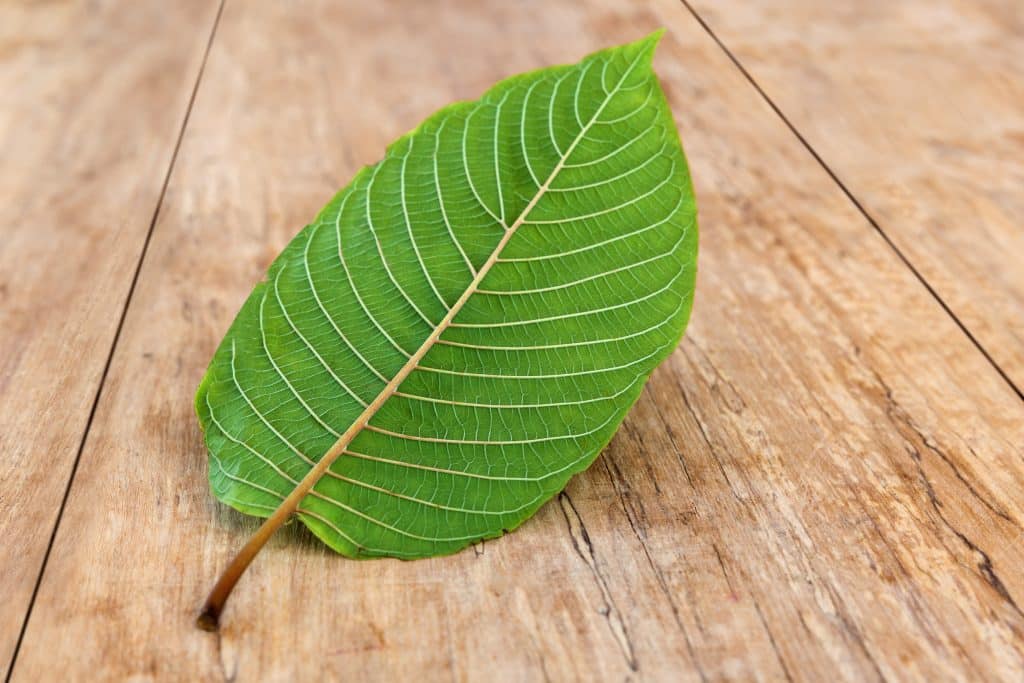Despite decades of use in Thailand and other Southeast Asian countries — and the amazing benefits that come with it — kratom faces a lot of negativity.
Most parts of the US don’t regulate kratom — you can buy it online or in local shops in most US states. Rhode Island is, unfortunately, one of the few exceptions where kratom is banned.
Find out how Rhode Island views kratom, what those against it have to say, and about the possible change in legislation in 2023.
Is Kratom Legal In Rhode Island?
No, kratom is illegal in Rhode Island.
In 2017, the FDA warned about possible harmful risks caused by kratom, which put pressure on local legislators.
As a result, in May of that same year, the health director recommended the government add kratom to Rhode Island’s Uniform Controlled Substances Act. This act was amended with kratom’s two main alkaloids on it, banning their use and commercialization.
Three bills since then, Bill 5542 (in 2019), Bill H5909 (in 2021), and H7595 (in 2022), sought to implement the Kratom Consumer Protection Act, making kratom legal but with restrictions and guidelines. All three have failed, but now there’s a new bill being considered.
In February 2023, Bill H5330 was introduced and is yet another attempt at regulating kratom through the KCPA. If this bill passes, it would allow the (regulated) sale of kratom within the state for those over 21.
Unfortunately, it might still be a fight as kratom faces plenty of opposition from the Rhode Island Department of Health and the Department of Behavioral Healthcare, Developmental Disabilities, & Hospitals. Are their fears valid? We discuss this below.
Also see: Can I Buy Kratom in Providence, RI?

Why Is Kratom Illegal In Some Places?
People use kratom for many reasons, but it’s most popular for its pain relief. Unfortunately, this is also why it ends up banned. Because it reacts to opioid receptors much as prescription opioids do, there’s concern that kratom is just as dangerous — but it’s not.
Opioids like morphine, hydrocodone, codeine, and methadone work great at killing pain, but they’re also highly addictive.
Kratom is an atypical opioid and can be addictive, but not in the same way. Because of how it interacts with different systems, it has less potential for addiction, its withdrawal symptoms are nowhere near as strong, and there’s little risk of overdose. If you use it properly, the risks are low, and the side effects are minimal.
Unfortunately, research into kratom has just begun, and we still don’t know much about its long-term effects — though it’s a traditional medicine in Southeast Asia and has been used there for hundreds of years.
However, we are learning more and hearing about the positive effects kratom has on people’s lives. When we look at the available research instead of the myths and misinformation, we see a safe herb with great medicinal potential. The World Health Organization (WHO) even reviewed kratom in 2021 and says it doesn’t pose a threat to the public.
The tide can turn, and public (and government) opinion can change, making way for new laws that aren’t based on fear.
Suggested Reading: Why Is Kratom So Controversial?
1. Kratom Is a Powerful Pain-Reliever
Kratom is an excellent analgesic when used correctly. Red vein kratom is the most similar to opioids and stands out when it comes to killing pain. Don’t self-medicate; find out what’s causing the pain first.
2. Kratom Boosts Energy & Focus
Many people turn to kratom for energy and concentration. White strains work best for this, especially in lower doses. The effects of this kind of kratom are more potent than those of caffeine, but they’re also smoother.
While too much coffee can leave you with jitters and anxiety, kratom is more forgiving (if you stick to a reasonable dose).
3. Kratom for Opiate Addiction
The same thing that makes kratom “dangerous” is the same reason people turn to kratom to help with opioid addiction. Kratom helps combat opiate withdrawal, as its alkaloids act similarly to opiates, creating a sense of relief from cravings.
Red kratom’s powerful sedative effects make it the best option to treat these cases. However, it’s essential not to overdo it. Keep in mind that, even if you’re going through opiate withdrawals, too much red kratom can make you overly lethargic and moody.
4. Kratom Helps Combat Insomnia
The high content of mitragynine in red vein kratom makes it ideal for helping with insomnia. People suffering from sleep disorders usually have a hard time treating them and have to choose between prescription drugs (which can be dangerous) or natural herbs (often ineffective).
Red vein kratom is a middle ground between those two. It may not be as strong as benzodiazepines, but it’s very effective and carries fewer side effects.
5. Kratom Helps Fight Anxiety & Depression
Kratom can help anxiety and depression, two prevalent psychological disorders. It’s not a magical solution, but it can make both more manageable.
If you’re dealing with anxiety, red vein kratom is best due to its relaxing effects. However, if you’re suffering from depression, go with white vein kratom to get the stimulation and mood boost you need.

How Do You Use Kratom?
There are two easy ways to consume kratom: caps or powder.
Both methods are equally effective. Just be aware that GI issues are pretty common with kratom, and some users report fewer of these symptoms when using caps instead of powder.
On the other hand, kratom capsules are usually more expensive, but you can save money by making them yourself.
If you use powder, you can make it into a tea, parachute it, or use the popular toss-and-wash. Just be aware that kratom tastes bitter, and many people don’t like it.
Kratom Strains
There are many varieties of kratom, called strains. Each strain causes different effects, so it’s essential to know which one does what. The simplest way to classify kratom strains is by their vein color.
Red vein kratom is a potent painkiller and sedative. This is because these strains are vibrant in 7-hydroxymitragynine, a mu-opioid agonist alkaloid.
White vein kratom has a more stimulating and euphoric effect, which is helpful for concentration and focus. This is because of its high mitragynine content, an alkaloid that binds to serotonergic receptors.
Green vein kratom is a milder combination of the other two vein colors. Green strains have a balanced alkaloid profile, which makes them neither too stimulating nor too sedative.
Kratom Dose & Frequency
When it comes to kratom dosage and intake, each user will find a different sweet spot. However, some concepts apply to all kratom users: take the least amount you need as infrequently as you can.
This will result in you having fewer side effects and not building tolerance as quickly.
That said, the typical kratom doses are as follows:
- Low dose (1 – 3 g)
- Medium dose (3 – 5 g)
- High dose (5 – 8 g)
Start with a low dose and regulate it based on how you feel. Overdoing it can hinder the positive effects and bring undesirable ones.
Side Effects of Kratom
To avoid most of kratom’s side effects, take it in as small amounts as possible. The side effects aren’t severe, but they usually come in larger doses. The most common effects are:
- Dizziness
- Low blood pressure
- Constipation
- Lethargy
- Vomiting
- Nausea
Remember, you shouldn’t use kratom during pregnancy or with alcohol or drugs.

What’s the Future of Kratom In Rhode Island?
Kratom is still illegal in the state of Rhode Island, but maybe change is just over the horizon.
Three bills have attempted to change these laws and have failed. Like the others, the current bill seeks to legalize kratom but impose extra regulations limiting the type and potency of products and minimum age of consumption.
The best way to see change is to make your voice heard and use kratom responsibly. Don’t give others a reason to distrust it.
The list of states that continue to ban kratom is shrinking fast. Currently, the only states that actually ban the herb are Alabama, Arkansas, Indiana, Wisconsin, and Vermont.

